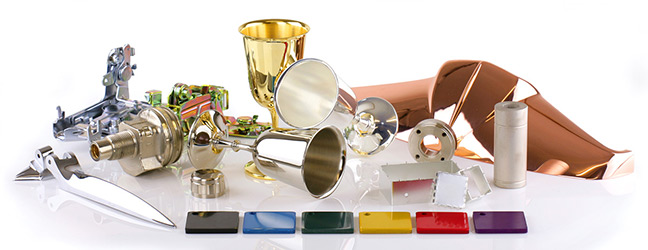What Is The Difference Between Anodising And Electroplating?
As a leading metal finishing company based in Poole, Dorsetware offers metal electroplating and anodising services. The hard anodising and electroplating services that we offer are some of the most popular metal finishing options. There are a lot of similarities between them, however it is important to know the differences before deciding on a finish. Depending on the effect you are trying to achieve, one may be more suitable than the other. As an anodising and electroplating company, we have put together a useful guide on the differences between the two.
What is anodising?
The anodising process involves a method called electrolytic passivation. Aluminium is the metal element that is most commonly anodised. Once a metal submerges in an acid electrolyte bath a chemical reaction takes place. An anodising service usually then involves passing an electric current through the solution. The aluminium acts as the anode in the chemical reaction and the layer of natural oxide thickens as a result. This anodising process is actually an acceleration of a naturally occurring phenomenon. Because the natural oxide layer integrates with the underlying metal, the surface cannot chip or scratch.
Advantages of anodising
There are several advantages of the anodising process that make it a popular metal finishing technique. Most importantly, it improves the corrosion and wear resistance of the underlying metal. Anodising is often used in manufacturing as it provides an object with better adhesion for paint and glue than untreated metal. Because of the accuracy of anodising, it is commonly used to prevent the galling of threaded components. Colour anodising is also a great way to add a design to a component that is extremely durable.
What is electroplating?
One of the most popular metal finishing processes we offer is metal electroplating. The first part of our electroplating service involves immersing two electrodes in the same electrolyte. The metal we are going to coat acts as the cathode. Once an electrical current passes through from the outside, metal atoms attach themselves to the surface of the metal.
Advantages of electroplating
Metal electroplating has many of the same advantages as the anodising process. It provides improved corrosion and wear resistance. Electroplated metal surfaces are also less likely to rust. Just like anodising, metal electroplating provides a decorative element to the surface of a metal.
Anodising process vs Metal electroplating
In summary, while they feature a lot of the same advantages there is a major functional difference between the two. The anodising process involves increasing the thickness of the natural oxide layer. Whereas metal electroplating is the process of coating one metal with another metal.
For more information about our anodising and electroplating services, get in contact with us at Dorsetware. We offer a wide range of metal finishing services. Speak to one of our experts by calling 01202 677939 or fill out our online contact form.

